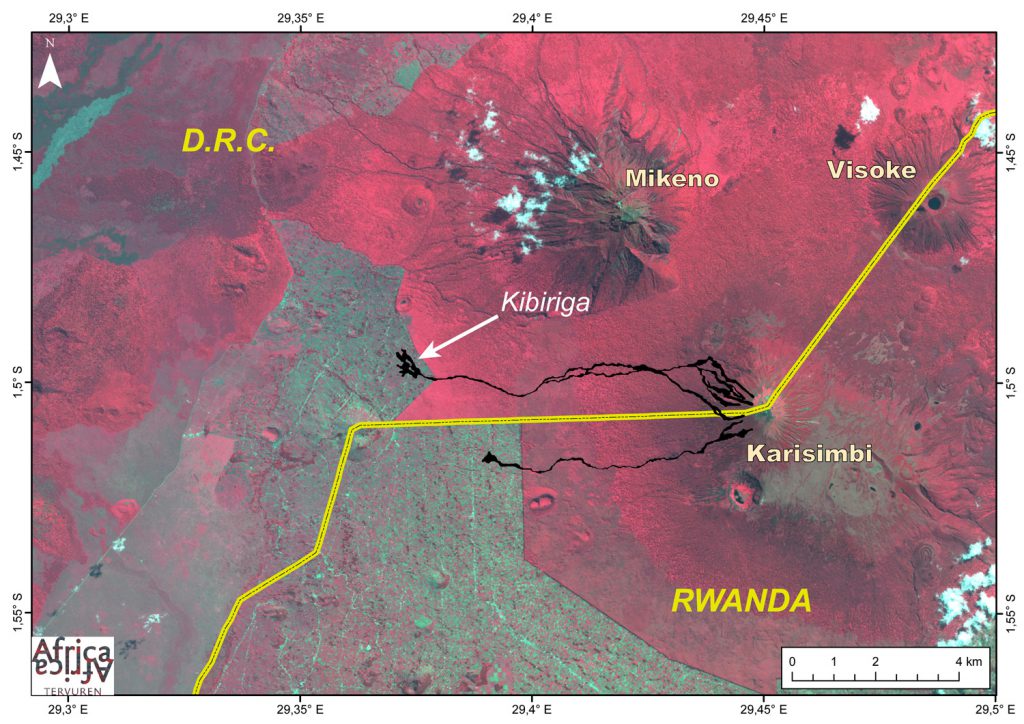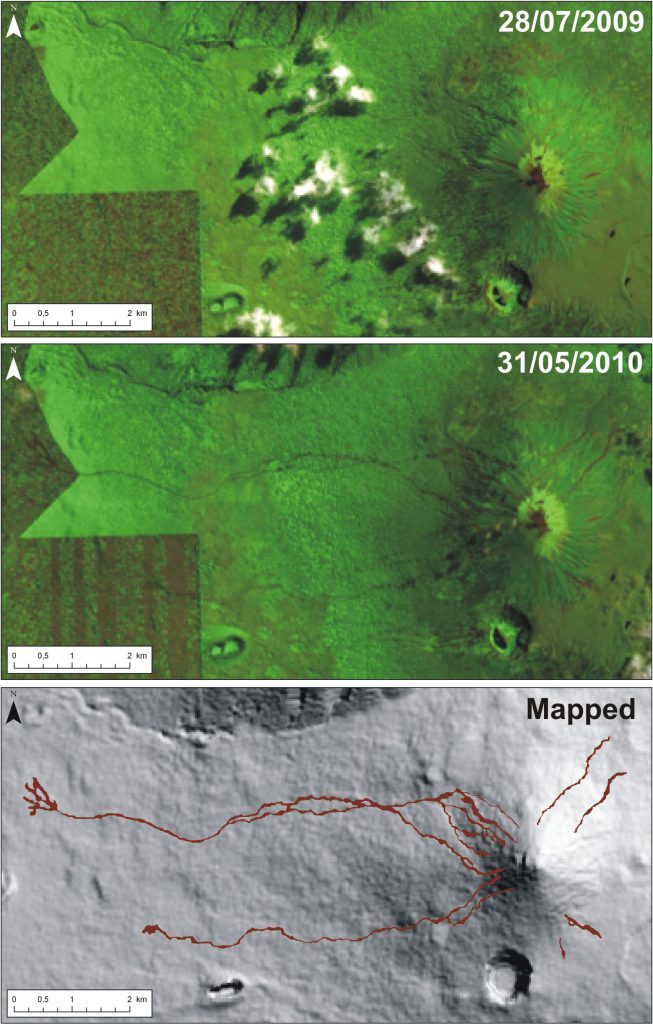The main edifices of dormant volcanoes in the Virunga volcanic chain (DR Congo, Rwanda and Uganda) are cut by deep gullies of dense temporary hydrographical networks. These gullies and rivers are only activated during heavy rains, triggering torrential events (Jost, 1987). During exceptional rains, torrents are able to mobilize large amounts of unconsolidated pyroclasts and alterites and develop in fast and devastating mud flows. Such event is not unusual in the Virunga region and occurred several times during the last Century.

From April to May 2010, extremely heavy – but not unusual – rainfalls occurred in the Virunga region, triggering several mud flows, in particular on the 16th May 2010, on the western-flank of Karisimbi volcano. Mud flows destroyed 232 houses in the village of Kibiriga (DR Congo) and 7 hectares of crops. Damages also occurred in the neighboring Rwanda. In Kibiriga, the mud flow reached at least 3m thick and carried large blocks of rock reaching sometimes more than 2m wide. About 50 people were killed during this event, which is probably the first lethal one ever reported in that area.

Before this event, such lethal hazard was not known by local authorities and field actors. The lack of accurate geographical information did not allow a correct location of the event and the origin of mud flows was attributed to a drainage of a lake located in the Muntango crater (southern crater of Karisimbi), whereas there was no evidence to corroborate this hypothesis. Fortunately, field and remote sensing surveys coupled with a bibliographic review allowed to correctly describe the event and its impact. The mud flows were mapped using optical satellite imagery. Remote sensing observations revealed that the lake of Muntango was not the source of mud flows.

The May 2010 disaster in Kibiriga portrays the dramatic hazard increase due to exponential demographic and urban growth associated with the wild deforestation and subsequent increased of soil erosion.
Reference:
Jost, C., 1987. Contraintes d’aménagements en région volcanique tropicale : La chaîne des Birunga au Rwanda. Université Louis Pasteur, Strasbourg 1. 283 p.
